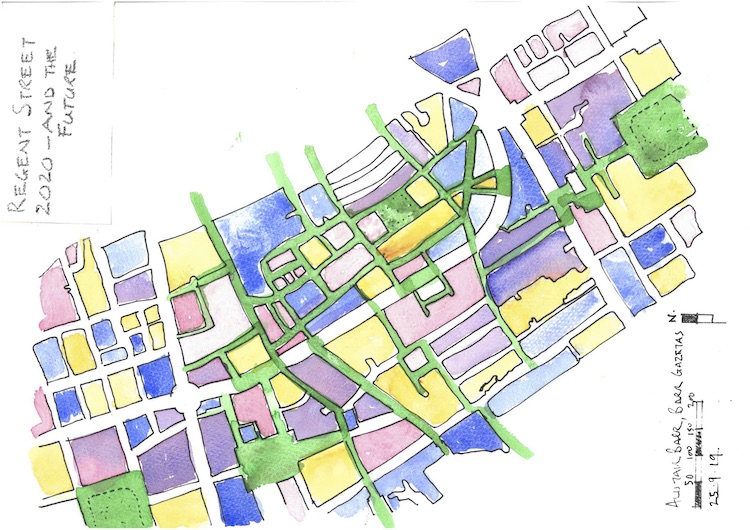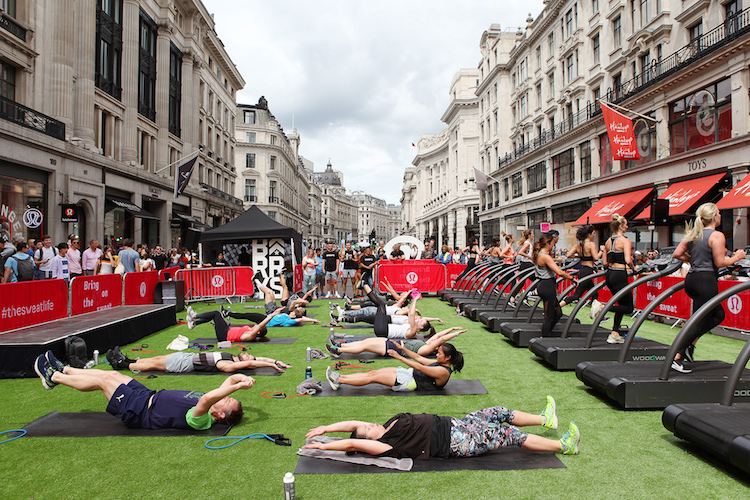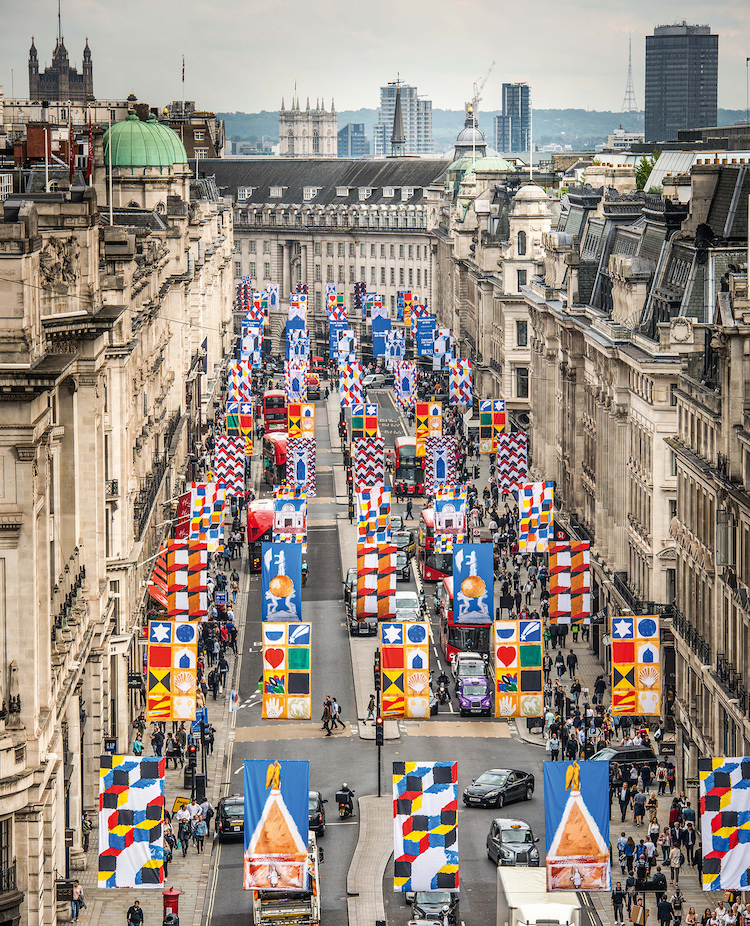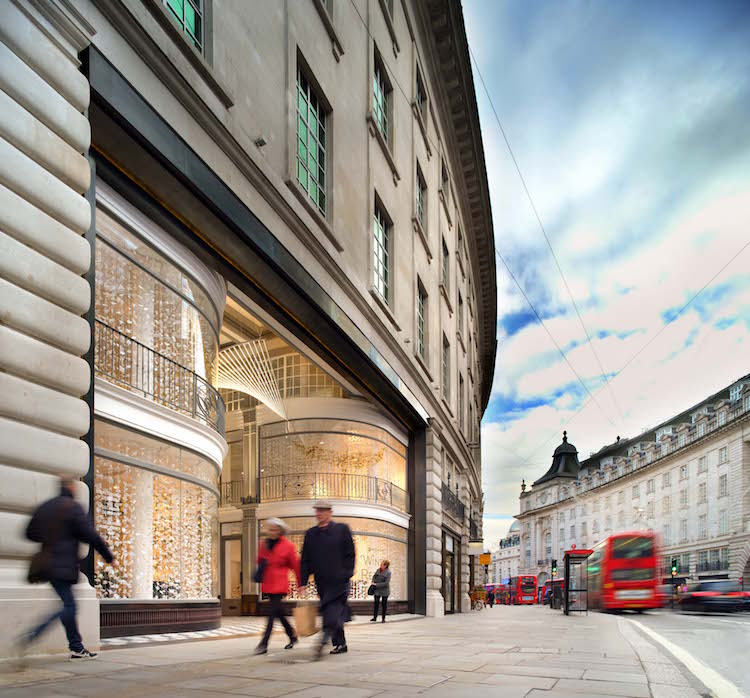Post
JOURNAL 2020 | Gorgeous Georgians - Regent Street Past, Present and Future
27 Apr 2020
Regent Street was built as a barrier between nefarious Soho and genteel Mayfair. On the boulevard’s 200th anniversary, Alistair Barr argues that pedestrianising the street could complete its transformation into a space where everyone can come together
2019 marked 200 years since Regent Street was given its name, after the Prince Regent had commissioned a new kind of architecture for a London of culture and refinement. Since then, Nash’s curved boulevard has become a global landmark, and one of the city’s most visited destinations. The main body of the boulevard runs in a broad sweep from Oxford Street to Piccadilly, while its side streets branch off east into vibrant Soho and west into more sedate Mayfair, tying together two areas that in 1819 were very different from their modern incarnations.
Often quoted as the world’s first purpose-built shopping street, this spectacular boundary between aristocratic Mayfair and poor, often violent, Soho may have been created by two conspiratorial events. First, the appointment of John Nash in 1890 as architect for Regent Street by the Prince Regent. Rumour had it that John Nash’s wife, Mary Ann, was the Prince’s mistress and that her son, James Nash, was fathered by the Prince. By favouring John Nash, the Prince was promoting his mistress and their illegitimate son. A famous cartoon was published about the affair in 1820 which shows George IV and Mrs Nash embracing on the royal yacht near Cowes and Nash became one of most Iampooned architects in British history. Second was that the division of rich and poor was to be an explicit product of this new elegant boulevard and the ‘ladies’ of Soho would not so easily mix with the ‘gentlemen’ of Mayfair.
Nash’s own commentary on his 1810 plan makes this very clear. ‘The whole communication from Charing Cross to Oxford Street will be a boundary and complete separation between the streets and Square occupied by the Nobility and Gentry and the narrower streets and manor houses occupied by mechanics and trading parts of the community.’
Working-class Soho was seen as bawdy and dangerous. Poverty, followed by squalor and criminality was the dark side of the glamorous, pleasure-driven Regency society. Although on the surface London was changing for the better, underneath was an ugly seam of violence fostered by drinking dens, prostitutes and debauchers. This wretchedness was also driven by rapid urbanisation as London grew from 1 million inhabitants to 1.3 million in just 20 years. Soho was a product of all these forces.
The stratification of society was so great that aristocrats and the gentry were seen by the lower classes as being completely outside of their reach, and high society judged those at the bottom to be worthy only of being swept aside and hidden.
Building a barrier between Soho and Mayfair was fully in line with the social morality of 1819. The consequence was that it encouraged the two London quarters to continue to develop strongly contrasting characters that persist 200 years later. In the book Soho Past, historian Richard Tames writes: ‘Soho may be grateful for Nash’s unflinching snobbery. He established a boundary so unambiguous that it has helped preserve Soho’s village atmosphere from invasion ever since.’
However, as society changed London’s anarchic nature breached the strict boundary many times; those breaks in the wall are where the strongest urban tensions are resolved into unique places. Nineteenth century tailors in Savile Row, Mayfair, secretly had clothes for their aristocratic clients made cheaply in Soho and delivered to the back door, across the divide. In 1912 the debauched rakishness of Soho crossed the Nash divide when The Cave of the Golden Calf nightclub opened on the Mayfair side to provide Soho decadence in a genteel social setting. This was Europe’s first nightclub and patrons were directed here if they were too outrageous for the Café Royal on Regent Street.The proprietor Frida Strindberg from Vienna wanted her cabaret to have ‘an electrical charge which projects them through the air, fizzing and crackling with excitement.’ Decorations were by Epstein, Gill and Wyndham Lewis to enhance the ‘libertarian pleasure principle.’
David Bowie recognised that Heddon Street, then a low-rent warren of photographers’ studios and rag trade spaces full of cardboard boxes and white vans, was a pocket of Soho life in Mayfair. So his 1972 album cover photo for Ziggy Stardust is taken in this transgressive street, ‘with just the beer light to guide us.’
Years of improvements by landowners the Crown Estate and other owners have eroded the divide. Today the side streets of both Mayfair and Soho provide a balanced range of visitor experiences with their pedestrianised and peaceful atmosphere. Pavements have been widened in many places and streets such as Glasshouse Street, Kingly Street and Carnaby Street in Soho and Heddon Street in Mayfair have been fully pedestrianised. This has been achieved by strictly timetabled delivery and waste collection schemes in connection with Westminster Council and the New West End Company intended to avoid rubbish disrupting pedestrian enjoyment.
Even more changes are needed if pedestrians are to enjoy today’s Regent Street to its fullest potential. As in many of the UK’s, and Europe’s boulevards and high streets, traffic flow is a barrier that separates streets, communities and neighbours. However, for four Sundays each summer Regent Street is traffic free. There is grass, picnics, yoga, events, food stalls and a sense of wonder in being surrounded by a beautiful proportioned street. It is a revelation.
This could be a permanent pedestrian priority street, with Regent Street setting an example for many traffic challenged shopping streets. No more barriers but the friendliest pedestrian space for shopping and enjoyment. The process could be phased and will result in a better experience for visitors and workers alike. Nash deliberately disconnected the cross streets along the route but the vestigial alleyways on the Soho side are a well-used connection to Carnaby Street and beyond. The green spaces of Hanover Square and Golden Square could be better linked by signage. Today rooftop allotments and bee hives along Regent Street are already encouraging biodiversity and wellness for the street’s occupants. The new Royal Academy linkage from front to back and the rejuvenated Quadrant Arcade have begun to create a finer grain circulation which reaches across the old boundaries.
I am calling for Nash’s snobbish boundary to be reimagined into a more democratic space for residents, visitors and London workers to enjoy every day. What a birthday present that would be for Regent Street.
Architect Alistair Barr is a founding partner of Barr Gazetas, which has recently completed the restoration and transformation of Quadrant Arcade in the west of Regent Street near Piccadilly Circus



